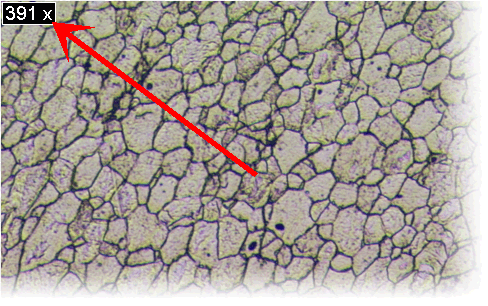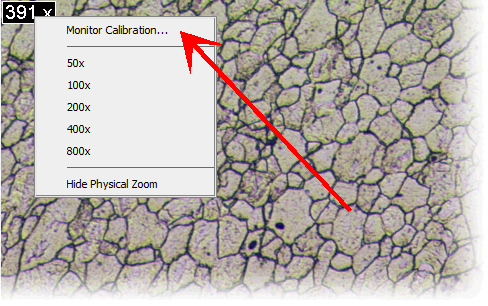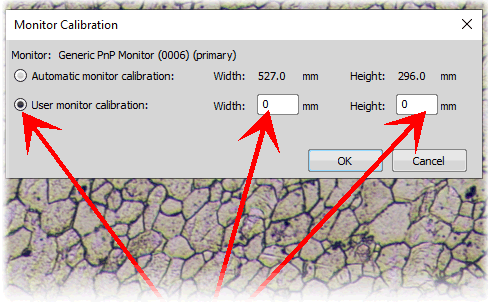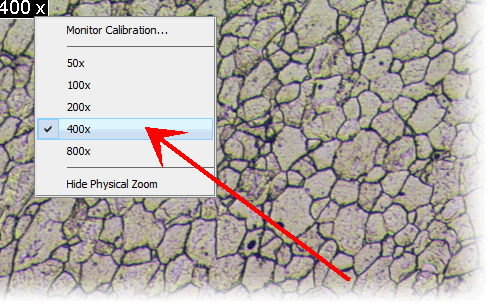If we want to apply the comparative principle, it is absolutely essential to have a correctly set “physical zoom”. A calibrated acquisition system produces calibrated images (images with known pixel size). To display such images in correct size on the screen, the monitor must be calibrated (sizewise) as well.
Show physical zoom
Click with
 RMB to the image to display a context menu and select the Show physical zoom command. If the image is calibrated, a value of the physical zoom appears in the top left corner. Otherwise N/A would be displayed.
RMB to the image to display a context menu and select the Show physical zoom command. If the image is calibrated, a value of the physical zoom appears in the top left corner. Otherwise N/A would be displayed.Check monitor calibration
Click
 RMB on the physical zoom value and select Monitor Calibration.
RMB on the physical zoom value and select Monitor Calibration.A dialog appears where you can check whether the system detected your monitor correctly. If not, you can enter real dimensions of your screen (the actual display without a frame) manually.
Zoom the image as requested
When everything is alright, you can zoom the image to a particular physical zoom (sample to screen). Right-click the physical zoom field and select a predefined zoom value.
With this function, we can correctly compare images with the standard charts, stored in the software module.
Note
As the comparative method operates with the physical zoom automatically, it is not necessary to set it up before the measurement. This option just helps to make a good orientation and to select the best objective for the measurement.



